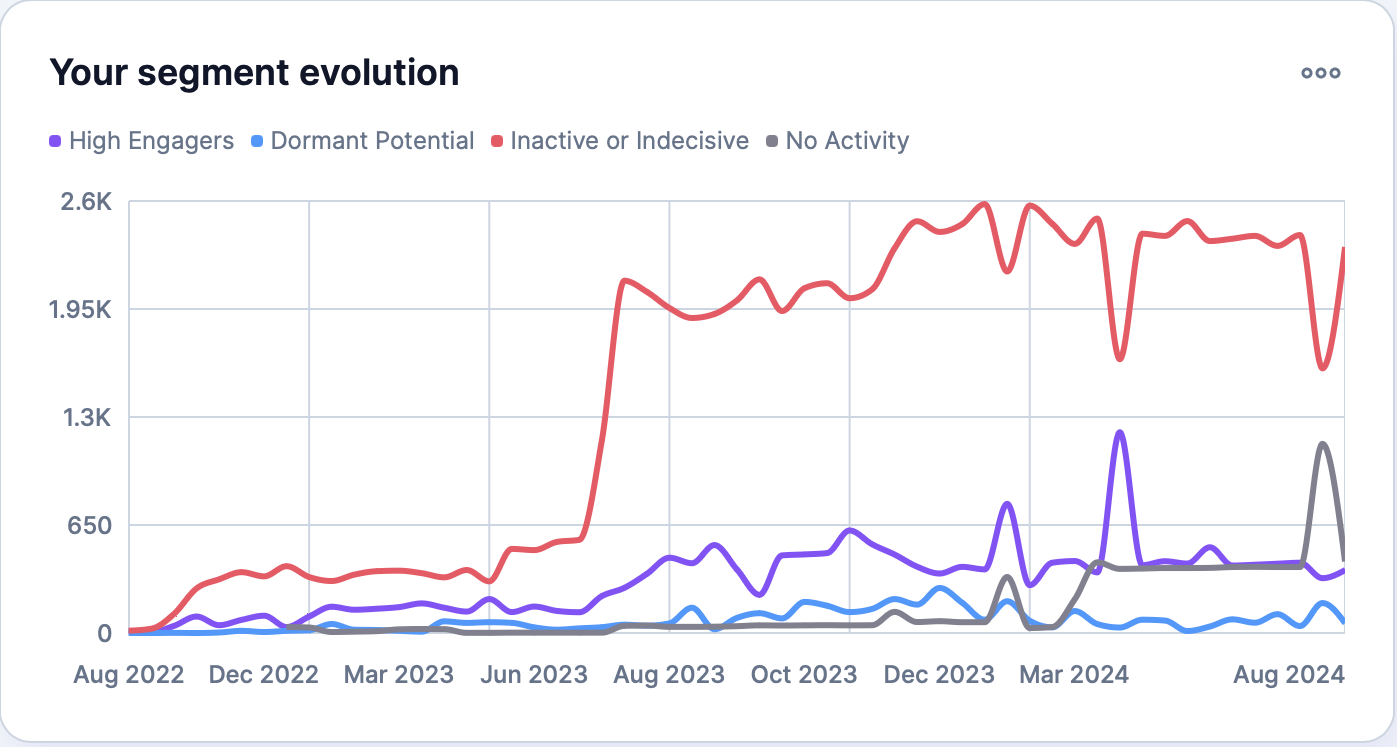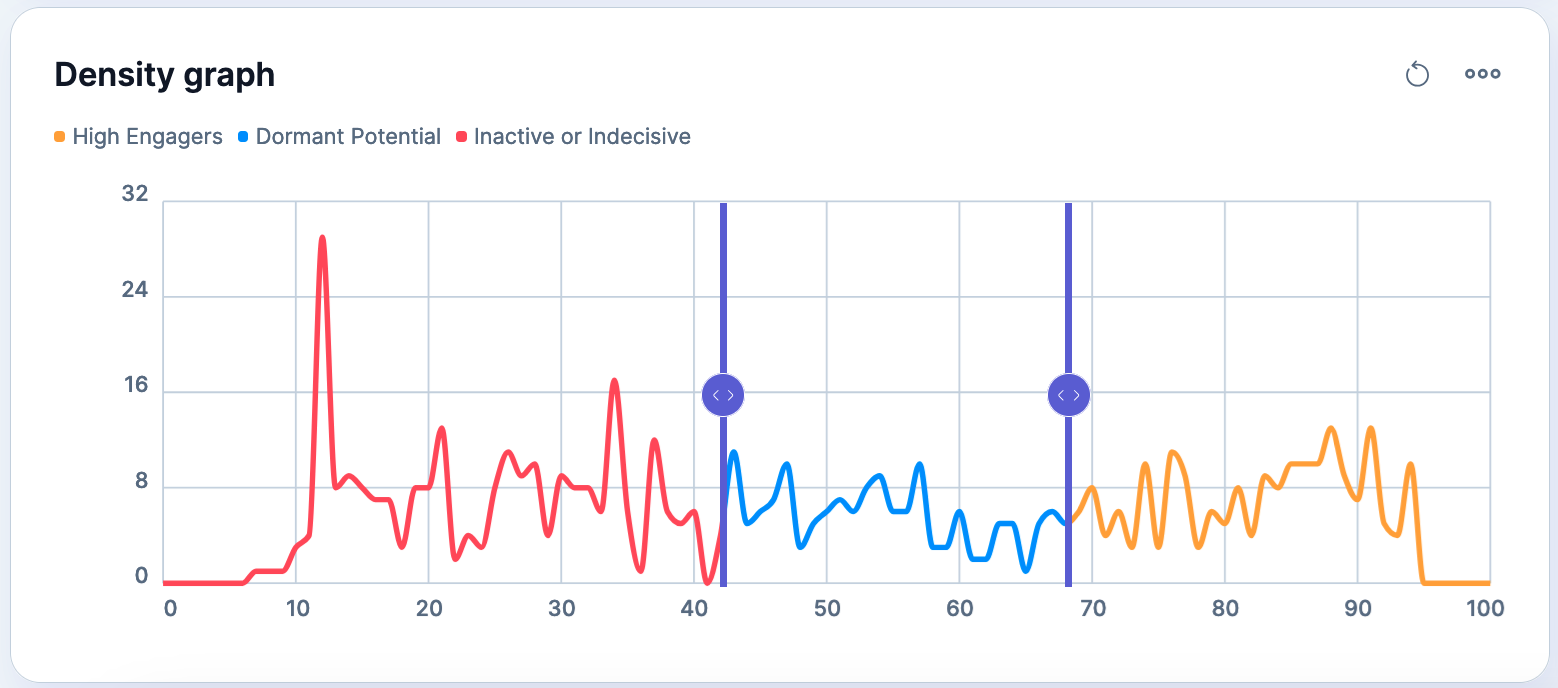Prioritizing lead follow up has been a challenge for companies for decades.
One established scoring system, for example, is the two-dimensional scoring model. This combines explicit contact data, such as age, company size, industry or function, and implicit data, such as website visits or form submissions of a contact. The explicit data dimension is then categorized in the form of a letter (A – the highest value to D – the lowest value) and the implicit data in the form of a number (1 – the highest value to 4 – the lowest value). An ideal profile would then be a lead with a scoring of A1.
In addition, you can give the selected data or categories a weighting of your own choice.
Besides the two-dimensional scoring, some marketing automation solutions also offer the pure display as a number. This number is also based on an evaluation of explicit and implicit contact data, however, both numerical values are added up in just one number which does not allow to distinguish any longer the explicit and implicit criteria’s.
The challenge with these scoring systems is that we as humans try to interpret the data and map it into a model – but the problem usually starts with the fill rates of the explicit data.
For example, if the company size field is only 25% filled – Leads not having this data can no longer become an “A” lead from a purely mathematical point of view, even though the contact may still be strongly interested in the products and services of a company. Furthermore, there is no empirical evidence why the availability of certain attributes and the pure number of website visits or form submits is an indicator of lead conversion. These models rely on human gut feeling instead of relying on statistical models and empirical evidence.
The other big issue is what to do with datapoints that are not included in the model at all? E.g. custom fields or fields which are filled quite good but not included in the model.
HubSpot delivers two scoring models
-
HubSpot Standard Scoring
HubSpot Standard Scoring is a feature within the HubSpot platform that allows marketers to assign a numerical score to leads based on their interactions with the company. The score indicates how interested a lead is in the company’s products and services, and it can be used to determine which leads should be prioritized in the sales cycle. HubSpot Scoring can be customized to reflect the specific criteria that are important to the company. It uses data from the lead’s activity, such as page visits, email opens, and form submissions, to assign a score. But as explained above this model reflects only a gut feeling of the user which is creating the model.
The HubSpot Standard Scoring is only available for Marketing Hub Professional (Scoring on up to 5 properties) and for Marketing Hub Enterprise (Scoring on up to 25 properties) – please also see actual pricing of HubSpot.
-
HubSpot Predictive Scoring
HubSpot Predictive Lead Scoring is a tool that uses machine learning algorithms to score leads based on the likelihood that they will convert into customers. It uses a variety of factors such as website activity, demographics, firmographics, and past interactions to determine the lead score. This allows marketers to prioritize leads based on their likelihood to convert and helps them focus their efforts on the most promising leads. HubSpot Predictive Scoring is only available for Marketing Hub Enterprise.
What is the difference of those scoring models to the Thalox Engagement Score?
Just like HubSpot Predictive Scoring Model, thalox leverages the capabilities that machine learning gives us today – but we ask the system a specific question that makes a marketer’s life easy: “What is the likelihood that a marketing email recipient will open the next email.”
This is done by thalox automatically looking at the entire database and calculating which fields have an impact on the question asked + thalox including all sent emails and the behavior of each individual contact in the analysis.
At the push of a button, thalox presents the result as three segments on which you can target your next marketing campaigns. This saves the marketer an enormous amount of time for:
– the selection of the right target group
– the selection of relevant fields for a scoring model
– interpreting the data from a scoring model
In a nutshell these three concepts are trying to give an answer to completely different aspects:
-
HubSpot Standard Lead Scoring is a concept to define a certain level of data quality and a human made contract by when a Lead can be considered as marketing qualified to be handed over to sales for further processing.
-
HubSpot Predictive Lead Scoring provides a likelihood of a contact converting into a paying customer
-
Thalox Engagement Score provides the likelihood of a contact interacting with your brand





